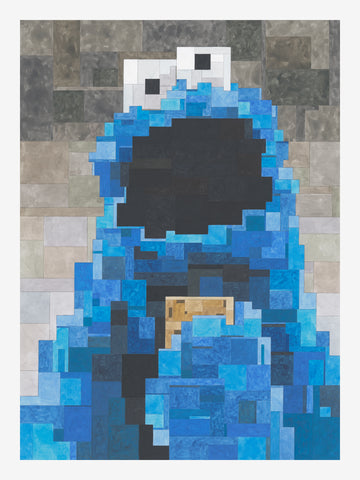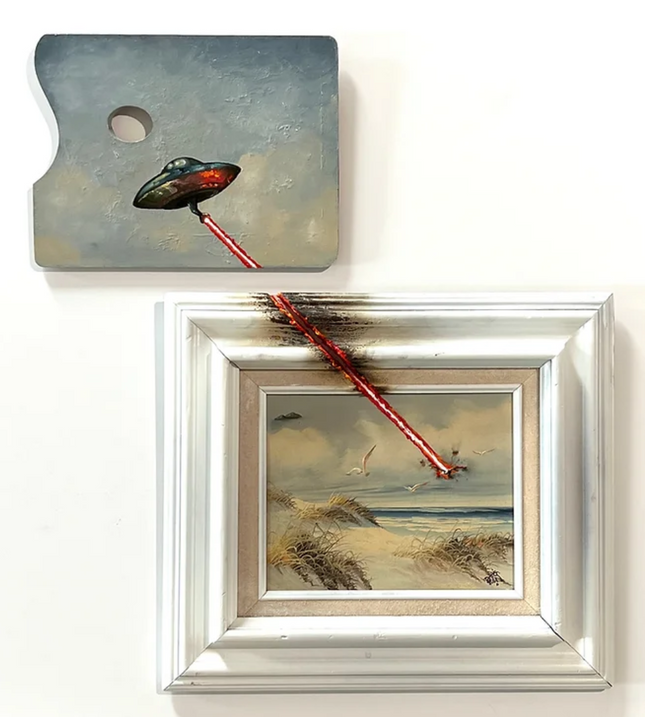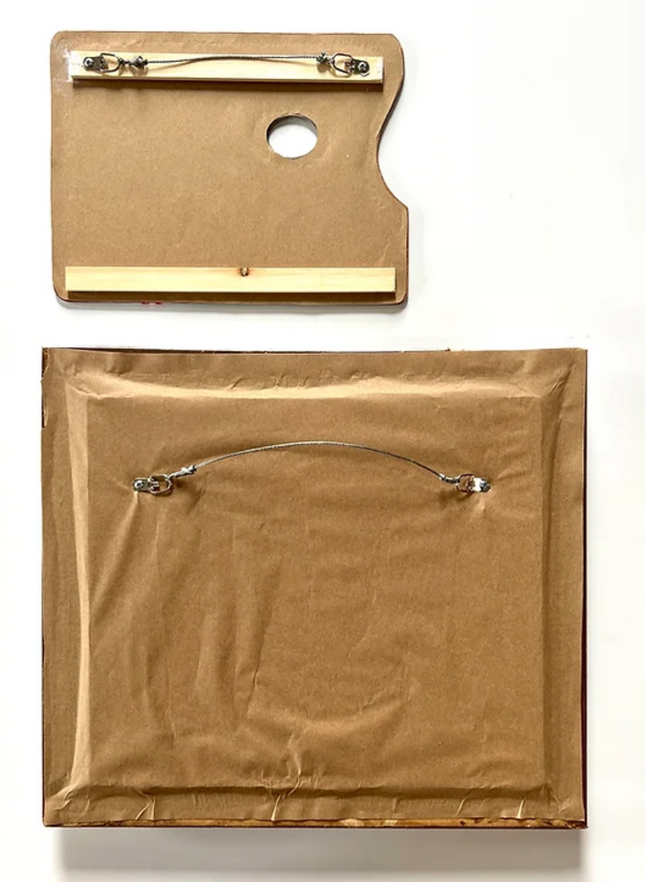
Blue & Teal


Dave Pollot Worlds Collide Part II Original Oil Mixed Media Reclaimed Painting by Dave Pollot
Worlds Collide Part II Original Oil Mixed Media Reclaimed Painting by Dave Pollot is One-of-a-Kind Artwork by Street Art Pop Artist. 2023 Signed Oil Painting on Vintage Reclaimed Upcycled Painting Diptych Original Artwork Size 12x9 (UFO) & 17.5x15.5 (Beach) of a UFO Laser Blasting a Seagul Bird On The Beach Intersection of Modernity and Tradition in "Worlds Collide Part II" "Worlds Collide Part II" is a striking representation of Street Pop Art and graffiti Artwork, reflecting a seamless blend of traditional artistic methods with the contemporary edge of pop culture. The artist behind this compelling piece has employed oil painting, a classic medium, and infused it with modern thematic elements, presenting a narrative that bridges the ordinary with the otherworldly. The diptych format, hinged together to form a single story, roots the work in historical art traditions, while the subject matter – a UFO engaging with a seagull on a beach – introduces a narrative that is unapologetically current and provocative. This original mixed-media artwork encapsulates the vivacity of street art by utilizing reclaimed and upcycled canvases. Repurposing these materials not only gives them a new lease on life but also pays homage to the ethos of street art, which often sees beauty in the overlooked and discarded. Combining the UFO and beach scenes provokes the viewer to contemplate the juxtapositions within our world – blending the familiar with the very unfamiliar. The artist's signature, marked in 2023, signals the creation of a piece deeply embedded in the present. This one-of-a-kind artwork, measuring 12x9 inches for the 'UFO' panel and 17.5x15.5 inches for the 'Beach' panel, captures the essence of pop art's interaction with the audience. It does not merely portray a scene but also calls into question the boundaries of reality and fiction, urging a reflection on our environment and the unexpected events that could unfold within it. The Narrative of Artistic Transformation in Reclaimed Art Through "Worlds Collide Part II," the artist exemplifies the transformative power of art. By breathing new life into vintage canvases, the artwork becomes a narrative of reinvention and the cyclical nature of art itself. The choice of a reclaimed painting as the medium is a statement about the potential for transformation – a core principle within Street Pop Art and graffiti Artwork. It is a visual and conceptual rebirth, where the past and the present amalgamate to create something entirely new and thought-provoking. The beach scene, typically a symbol of tranquility and nature's beauty, is disrupted by the fantastical invasion of a UFO, which starkly contrasts the serene backdrop. This decision illustrates the pop artist's flair for integrating science fiction elements into everyday settings, creating a space where different worlds can interact unexpectedly. The result is an art piece that is a testament to the imagination and the artist's power to challenge our perceptions of the normal and the known. In creating "Worlds Collide Part II," the artist presents an alternate reality and challenges the viewer to consider the impact of such an event. The artwork becomes a portal to a story much larger than the canvas it occupies, inviting us to ponder the endless possibilities that exist beyond our own experiences. Embracing the Ethos of Street Pop and Graffiti Art "Worlds Collide Part II" vividly embodies the principles of Street Pop Art and graffiti Artwork. The art piece itself is a confluence of historical techniques and modern cultural expressions, symbolizing art's fluidity and ever-evolving nature. By combining disparate elements – a traditional beach landscape and a symbol of futuristic technology – the artwork mirrors the essence of street art and pop art: the merging of various aspects of culture to create both reflective and forward-looking. The artist's innovative approach to the subject matter and medium underscores a broader cultural commentary inherent in street art. It speaks to a world where boundaries are constantly being redrawn and redefined, where art is not confined to galleries but is a part of the living urban landscape. Thus, The painting becomes more than just a visual experience; it is a conversation with the viewer, a dynamic interaction central to the street and pop art experience. Worlds Collide Part II is not just an art piece but a cultural artifact that encapsulates the zeitgeist of our time. It reflects the ever-changing nature of art, the unexpectedness of life, and the beauty that arises when different worlds come together. Through this piece, the artist invites us to witness the creative potential of combining the traditional with the unconventional, the real with the imagined.
$7,452.00



